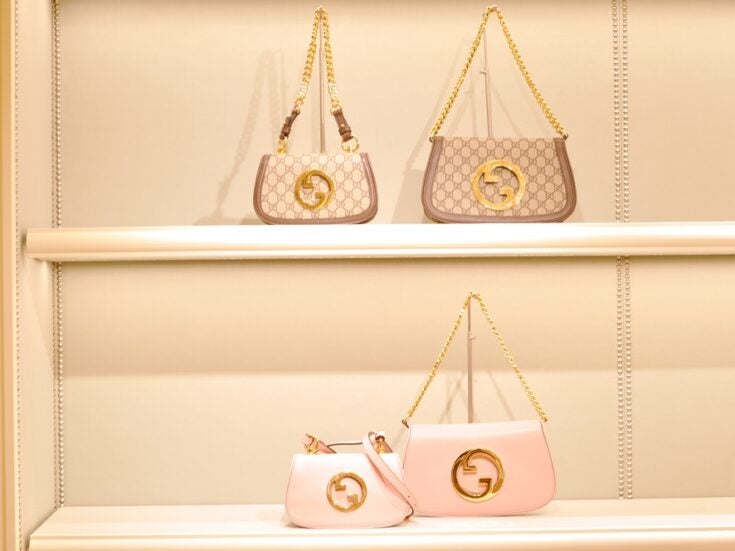Gear of the Dragon The Chinese luxury market is swallowing up Western products like there’s no tomorrow. But what of the country’s own luxury brands? Sophie McBain finds growth in that area is a whole lot slower
Gear of the Dragon
The Chinese luxury market is swallowing up Western products like there’s no tomorrow. But what of the country’s own luxury brands? Sophie McBain finds growth in that area is a whole lot slower
FROM BEIJING TO Xi’an, Chinese consumers are gratefully swapping their Mao suits for Miu Miu, and the big luxury labels can’t quite believe their good fortune. McKinsey forecasts that China’s luxury market will grow by 18 per cent a year to become the world’s largest by 2015.
Western luxury brands could be forgiven for predicting near-endless growth in China, as second, third, fourth and 25th-tier cities surrender to the new-money appeal of the likes of Louis Vuitton. But there is another possible outcome: that Chinese buyers will tire of imported luxury and will turn instead to homegrown luxury products.
‘There’s some truth in that prediction,’ says Arne Eggers, fashion editor at Hong Kong Tatler, although he is wary of forecasting China’s fast-changing consumer market. ‘Some people worry that in ten to fifteen years’ time we will have reached a saturation of luxury products. At some stage you reach the point where you have twenty Louis Vuitton bags and Hermès scarves and you want something new, and that could be local design. But we’re a long way from that.’
Cathy Wu, co-author of McKinsey’s Insights China 2011 Luxury Report, also foresees a move towards local luxury. The country to look at is Japan, the largest luxury market in the world, she says. ‘Ten to fifteen years ago Japanese consumers were all buying Western products, but now Japanese designers are becoming more popular as consumers become more sophisticated and don’t just care about buying big brands, but about the concept behind the brand, the style, how it fits them.’ One suspects that Japan’s recently launched and amusingly Orwellian ‘Cool Japan Promotion Strategy Programme’ would go down well with Chinese technocrats.

Even without a ‘Cool China’ ministry, Chinese luxury brands are making a mark in some areas. Luxury producers of baiju, the traditional spirit, are flourishing, and — taking advantage of the 43 per cent import duties on super-yachts — several Chinese yacht-building companies have sprung up. Fashion-wise, Chinese luxury jewellery brands are showing the greatest likelihood of making it big. ‘When it comes to handbags or shoes, Western brands dominate. But when it comes to jewellery there’s more potential, because jewellery choices are more related to culture and wearing habits, so some brands are becoming quite well known,’ says Wu.
A few Chinese fashion designers — couturiers like Guo Pei, Uma Wang, Zhang Zhifeng and Qiu Hao — have been tipped as the next big thing, but they are far from becoming household names. ‘If you see magazines writing about the next upcoming Chinese designer, it’s quite often names that I haven’t heard of. I think it’s simply because there aren’t that many that are big, and people are undecided if they’re relevant or not,’ says Eggers, a revealing admission from a professional trendsetter. A comparison is often made with the early dot-com markets and the difficulty (and corresponding reward) of finding the next Google.
One problem for local brands is that Chinese consumers, far from conforming to the post-Communist stereotype of slavish devotion to branded bling, are very money-conscious, thoughtful buyers. ‘Made in China’ can now just as easily represent the craft of an atelier as the mass production of a sweatshop. Chinese craftsmanship is still thriving, and those looking for local design will simply visit the independent jeweller or dressmaker down the road. ‘The Chinese are actually very discerning, difficult consumers because they don’t want to pay more than is necessary. So they are happy to pay a lot of money for Western luxury goods, but if they can see that something is just as good made locally, they won’t be willing to pay the premium for the branded product,’ says Eggers.
While Chinese consumers trust local independent craftsmen to deliver high-quality products, the same cannot be said for local brands. These can benefit from some degree of Western backing, because purely Chinese labels are often treated with suspicion. ‘Although there are many excellent Chinese craftsmen, most people have had a problem with a poor-quality piece made in China — so they are more likely to believe that foreign brands are good-quality, even though the work is often outsourced to China,’ says Ben Cavender, senior analyst at China Market Research Group. Having a few shops outside China can help dispel prejudice against local labels, he believes.
A far bigger barrier for local brands, however, is developing the critical mass required to break China’s vast market — a difficult feat that can be made easier with the benefit of foreign marketing expertise and start-up capital.
‘It’s going to be very difficult for true Chinese luxury brands that are organically developed in China to suddenly become really big players in the market,’ says Cavender. ‘There will be more demand for products that reflect excellence in Chinese design and craftsmanship, but we are likely to see more from the brands that are owned by international luxury groups but that make use of a Chinese aesthetic.’ Shanghai Tang, owned by the Richemont group, is often cited as an example of this hybrid brand, an outwardly Chinese label with the backing of a Western luxury conglomerate — and while originally it packaged Chinese design for Western buyers, it is becoming more popular with fashionable Chinese.
Cavender foresees Western labels setting up their own Chinese sub-brands rather than investing in local labels. Shang Xia has gained a lot of press since its launch in 2010. It is a Chinese brand, which makes use of Chinese designers and materials, but was founded and is owned by Hermès. Despite the hype surrounding the business model, the company has yet to publish sales figures to support the theory.

At the same time, there is a risk that outside observers are too quick to dismiss emerging Chinese talent. This is partly because the stereotype of China as the factory for the world’s mass-produced tat is so enduring, and also because many Chinese companies have given little thought to building their brands abroad. According to a survey by research agency Millward Brown and WPP, 83 per cent of people outside China can’t recall a single Chinese brand.
Illustration by Femke de Jong
EVEN IF CHINA has yet to unveil its answer to Chanel, its influence over luxury markets can be felt in subtler ways. Western luxury companies are increasingly producing goods in China, being floated on the Hong Kong stock exchange and tailoring products to suit Chinese consumers. The Chinese ranges of Audi, Mercedes and BMW, for instance, have more comfortable back seats because Chinese HNWs are more likely to have drivers.
Equally, many consumers may not realise that there is a growing gap between the Western origins of their favourite luxury brand and its modern, global incarnation. Prada may be widely considered an archetype of Italian luxury, but a fifth of its goods are made in China and when the fashion house went public in 2011 it was floated in Hong Kong.
Many British luxury brands are now Chinese-owned, too: in 2002, Gieves & Hawkes was bought by Hong Kong property mogul Christopher Cheng; Harvey Nichols is owned by Hong Kong businessman Dickson Poon; Pringle of Scotland is owned by the Fang family; and the Queen’s former couturier, Hardy Amies, was rescued by Hong Kong fashion group Li & Fung. Chinese ownership is one thing, but if these owners show a propensity for appointing Chinese creative directors and designers, then those still searching for the next home-grown luxury brand may simply be asking the wrong questions.
Even as columnists pen ever more alarmist predictions of Chinese global supremacy, the old habit of underestimating China hasn’t quite been lost. In fashion, as in finance, the centre of influence is shifting towards the East, and the most significant changes are often the subtlest. China may not yet have developed its own Gucci, but when luxury labels are turning to China for custom, capital and perhaps even creative inspiration, that isn’t quite so important.
Sophie McBain is a staff writer at Spear’s






